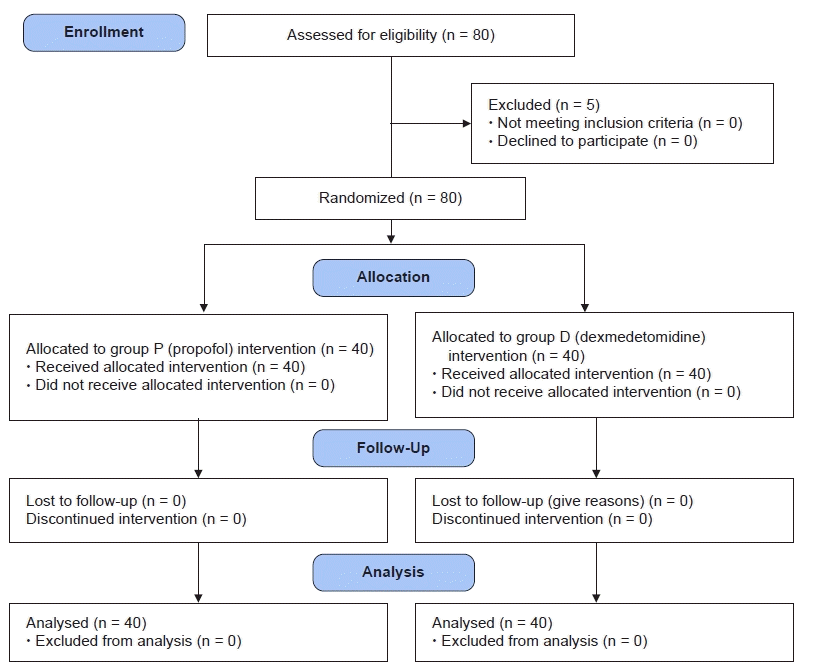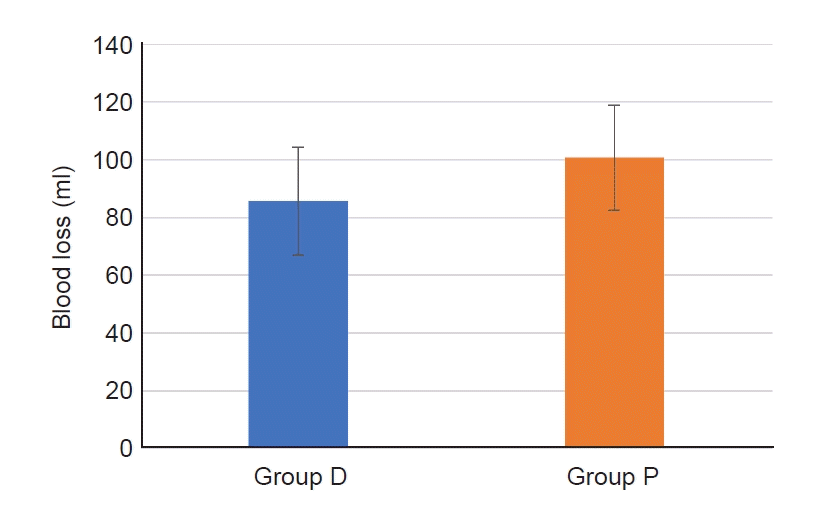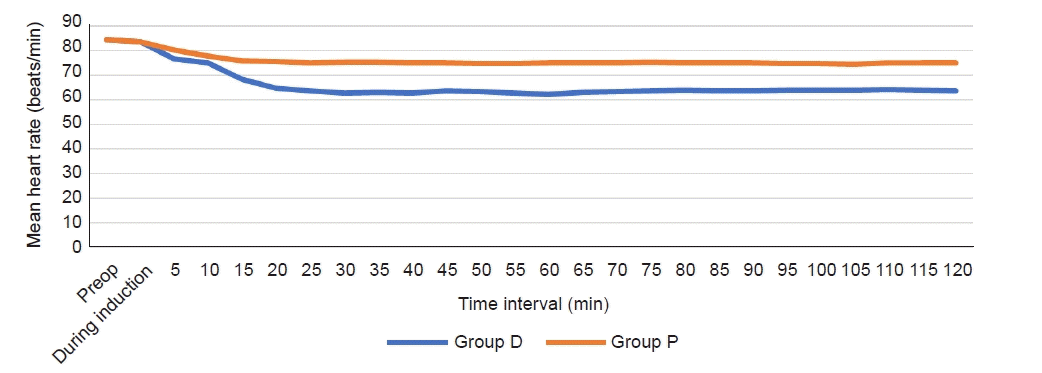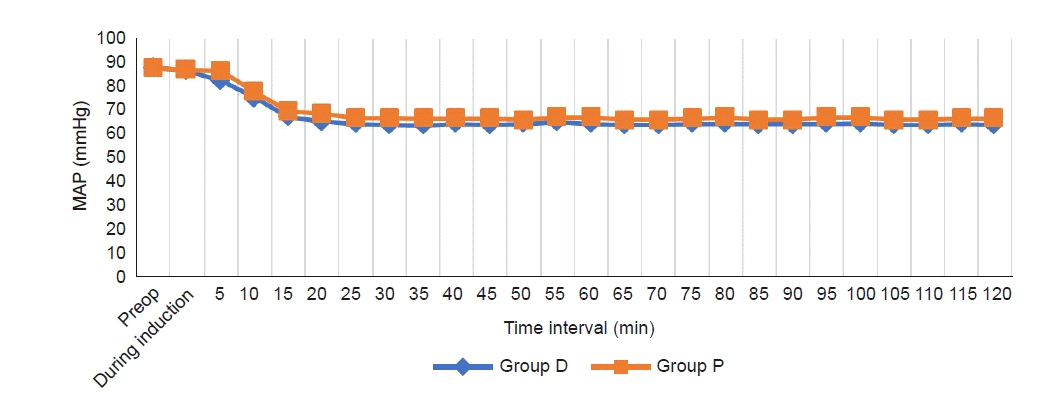1. Kennedy DW. Functional endoscopic sinus surgery. Technique. Arch Otolaryngol. 1985; 111:643–9.

2. Baker AR, Baker AB. Anaesthesia for endoscopic sinus surgery. Acta Anaesthesiol Scand. 2010; 54:795–803.

3. El-Shmaa NS, Ezz HAA, Younes A. The efficacy of Labetalol versus Nitroglycerin for induction of controlled hypotension during sinus endoscopic surgery. A prospective, double-blind and randomized study. J Clin Anesth 2017; 39: 154-8. Erratum in: J Clin Anesth. 2020; 63:109788.
4. Tan PY, Poopalalingam R. Anaesthetic concerns for functional endoscopic sinus surgery. Proc Singap Healthc. 2014; 23:246–53.

5. Rodrigo C. Induced hypotension during anesthesia with special reference to orthognathic surgery. Anesth Prog. 1995; 42:41–58.
6. Khalifa OSM, Awad OG. A comparative study of dexmedetomidine, magnesium sulphate, or glyceryl trinitrate in deliberate hypotension during functional endoscopic sinus surgery. Ain-Shams J Anaesthesiol. 2015; 8:320–6.

7. Degoute CS. Controlled hypotension: a guide to drug choice. Drugs. 2007; 67:1053–76.
8. Erbesler ZA, Bakan N, Karaören GY, Erkmen MA. A comparison of the effects of esmolol and dexmedetomidine on the clinical course and cost for controlled hypotensive anaesthesia. Turk J Anaesthesiol Reanim. 2013; 41:156–61.
9. Ankichetty SP, Ponniah M, Cherian V, Thomas S, Kumar K, Jeslin L, et al. Comparison of total intravenous anesthesia using propofol and inhalational anesthesia using isoflurane for controlled hypotension in functional endoscopic sinus surgery. J Anaesthesiol Clin Pharmacol. 2011; 27:328–32.

10. Tirelli G, Bigarini S, Russolo M, Lucangelo U, Gullo A. Total intravenous anaesthesia in endoscopic sinus-nasal surgery. Acta Otorhinolaryngol Ital. 2004; 24:137–44.
11. Mandal P. Hypotensive anaesthesia with remifentanil for functional endoscopic sinus surgery. J Anaesthesiol Clin Pharmacol. 2003; 19:411–5.
12. Fromme GA, MacKenzie RA, Gould AB Jr, Lund BA, Offord KP. Controlled hypotension for orthognathic surgery. Anesth Analg. 1986; 65:683–6.

13. Boezaart AP, van der Merwe J, Coetzee A. Comparison of sodium nitroprusside- and esmolol-induced controlled hypotension for functional endoscopic sinus surgery. Can J Anaesth. 1995; 42(5 Pt 1):373–6.

14. Aujla KS, Kaur M, Gupta R, Singh S. A study to compare the quality of surgical field using total intravenous anesthesia (with propofol) versus inhalational anesthesia (with isoflurane) for functional endoscopic sinus surgeries. Anesth Essays Res. 2017; 11:606–10.

15. Bajwa SJ, Kaur J, Kulshrestha A, Haldar R, Sethi R, Singh A. Nitroglycerine, esmolol and dexmedetomidine for induced hypotension during functional endoscopic sinus surgery: a comparative evaluation. J Anaesthesiol Clin Pharmacol. 2016; 32:192–7.

16. Shams T, El Bahnasawe NS, Abu-Samra M, El-Masry R. Induced hypotension for functional endoscopic sinus surgery: a comparative study of dexmedetomidine versus esmolol. Saudi J Anaesth. 2013; 7:175–80.

17. Salama HF. Remifentanil/propofol total intravenous anesthesia versus remifentanil/isoflurane inhalation anesthesia for controlled hypotension in lumbar spine fixation surgery. Ain-Shams J Anaesthesiol. 2014; 7:134–7.

18. Shah H, Kulkarni A. A comparative study between dexmedetomidine infusion and propofol infusion for maintenance in patients undergoing functional endoscopic sinus surgery under general anaesthesia. IOSR JDMS. 2016; 15:82–6.
19. Vineela Ch, Ganapathi P, Shankara Narayana P. Effect of controlled hypotension with dexmedetomidine versus nitroglycerin on intraoperative blood loss during FESS. IOSR JDMS. 2015; 14:42–5.
20. Somayaji A, Raveendra US. Effect of dexmedetomidine on blood loss and quality of surgical field in functional endoscopic sinus surgery: a double blinded prospective controlled study. Karnataka Anesth J. 2016; 2:90–8.
21. Ahn HJ, Chung SK, Dhong HJ, Kim HY, Ahn JH, Lee SM, et al. Comparison of surgical conditions during propofol or sevoflurane anaesthesia for endoscopic sinus surgery. Br J Anaesth. 2008; 100:50–4.

22. Bharathwaj DK, Kamath SS. Comparison of dexmedetomidine versus propofol-based anaesthesia for controlled hypotension in functional endoscopic sinus surgery. South Afr J Anaesth Analg. 2019; 25:37–40.

23. Mathur A, Nambiar PM. Comparison of dexmedetomidine-isoflurane versus fentanyl-propofol based anesthesia for controlled hypotension in functional endoscopic sinus surgery. Int J Biomed Res. 2014; 5:552–5.

24. Moshiri E, Modir H, Yazdi B, Susanabadi A, Salehjafari N. Comparison of the effects of propofol and dexmedetomidine on controlled hypotension and bleeding during endoscopic sinus surgery. Ann Trop Med Public Health. 2017; 10:721–5.
25. Lee YL, Thangavelautham S, Harikrishnan S, Karthekeyan R, Kothandan H. Is hypotensive anaesthesia guided by invasive intraarterial monitoring required for orthognathic surgery? - a retrospective review of anaesthetic practice and intraoperative blood loss in orthognathic surgery in a tertiary hospital. Indian J Anaesth. 2021; 65:525–32.





 PDF
PDF Citation
Citation Print
Print







 XML Download
XML Download